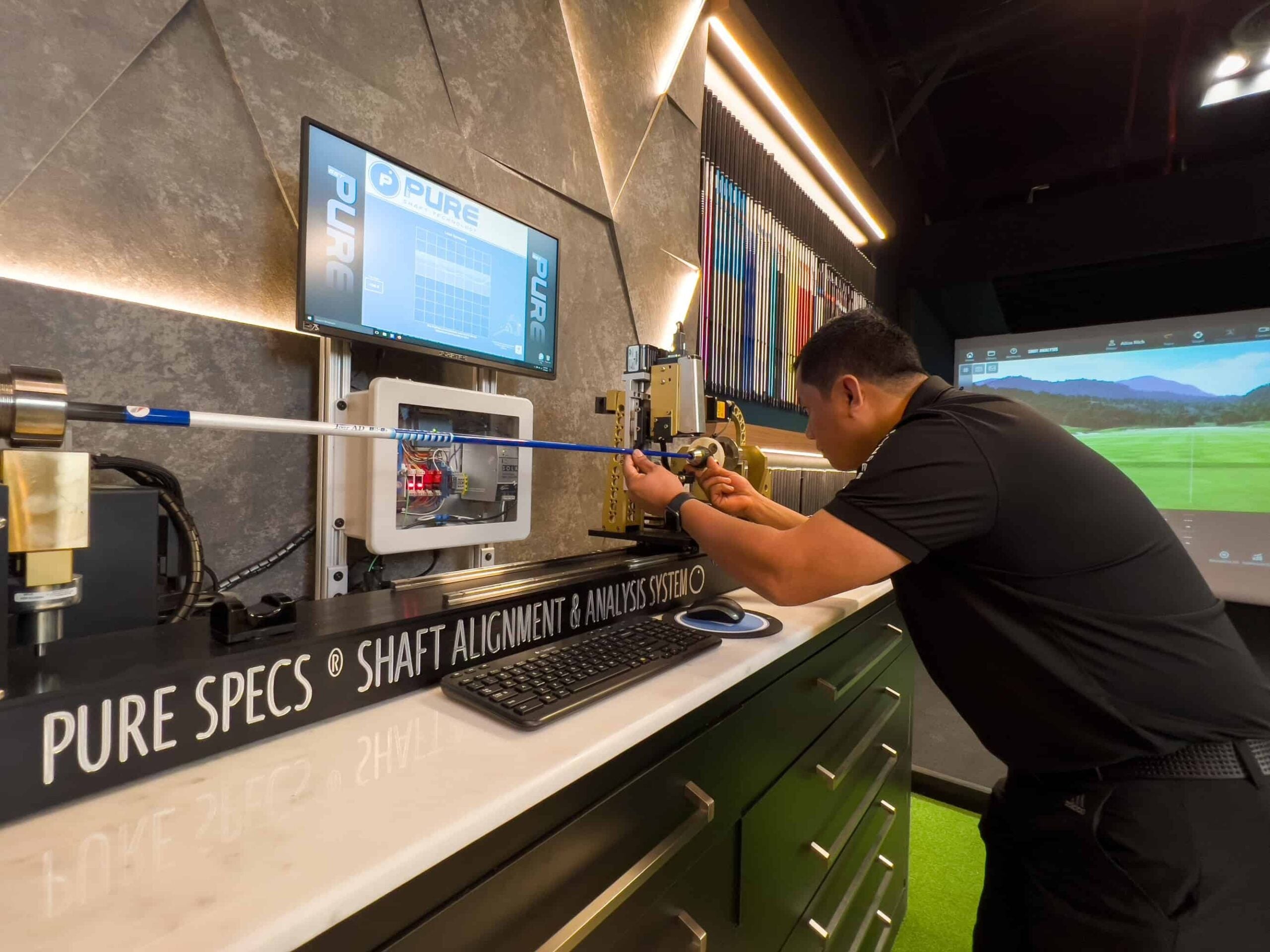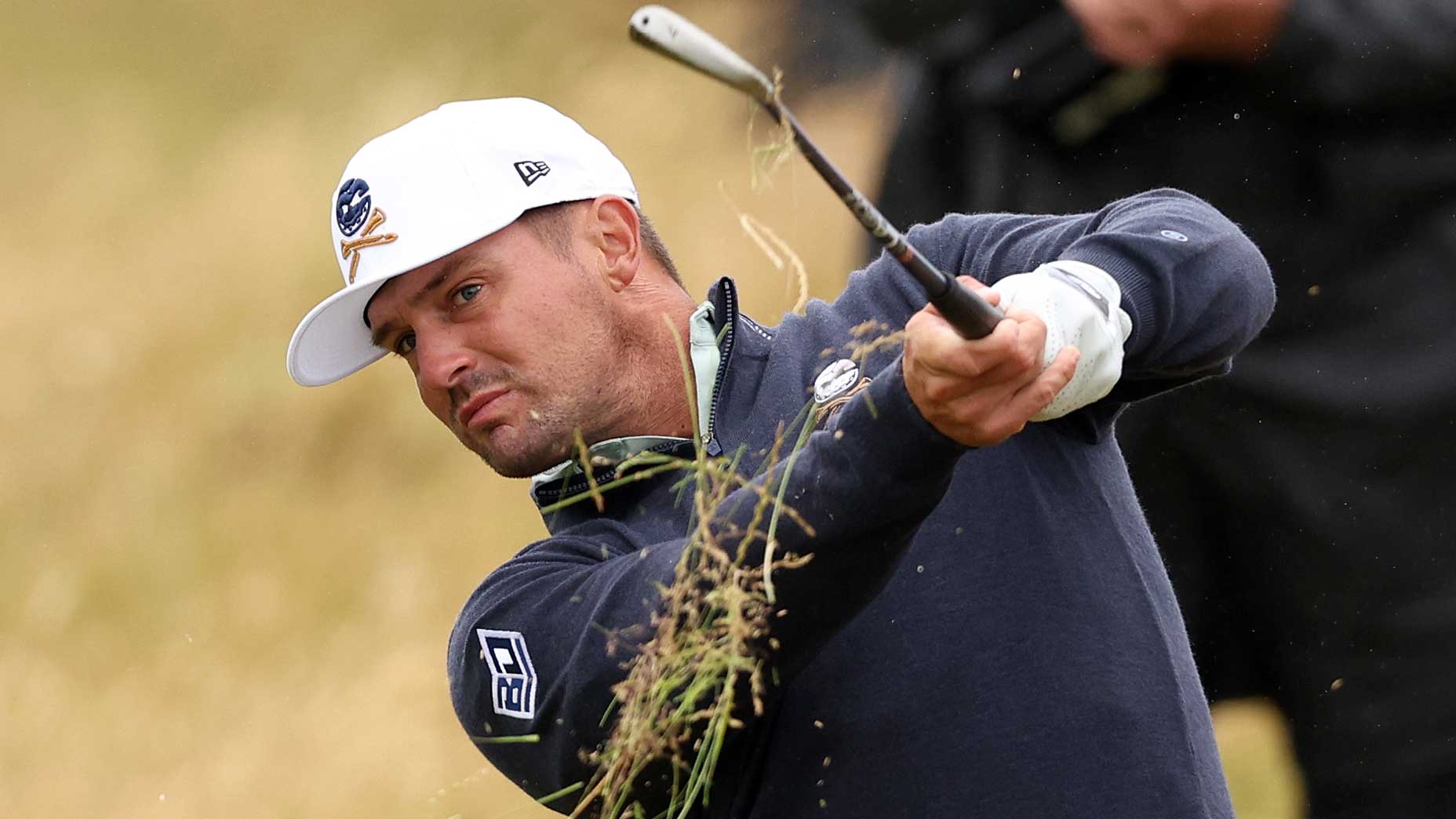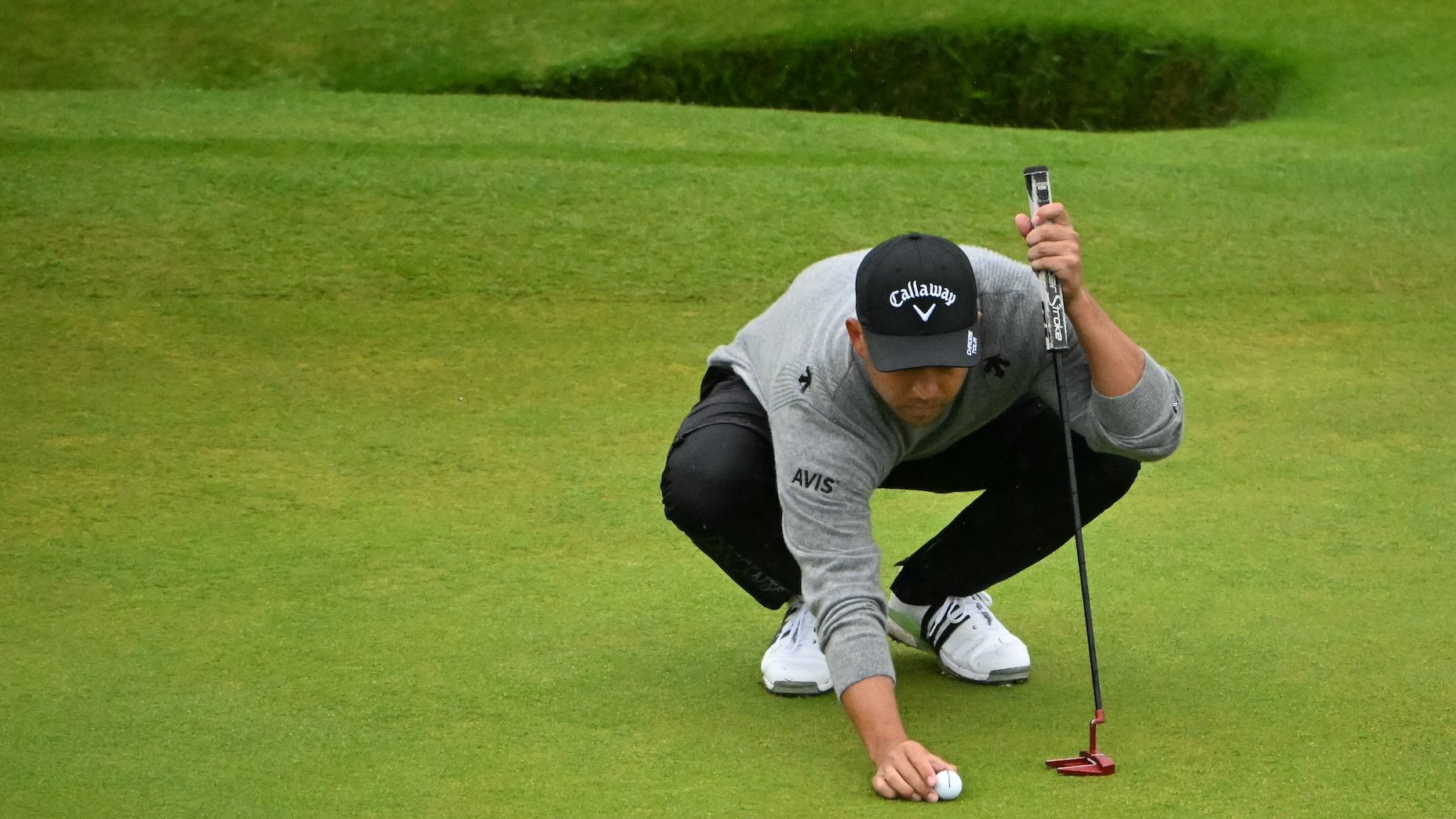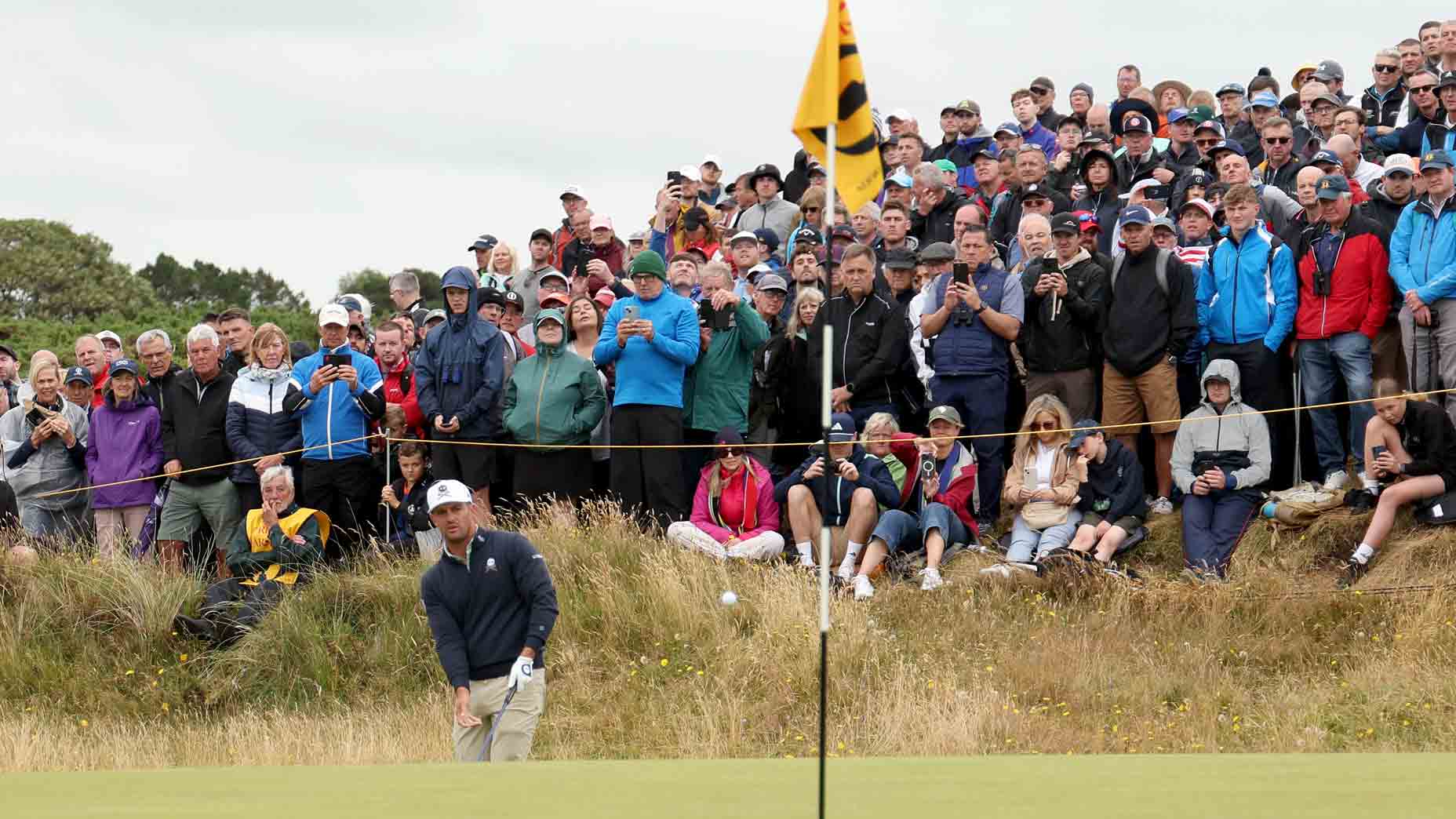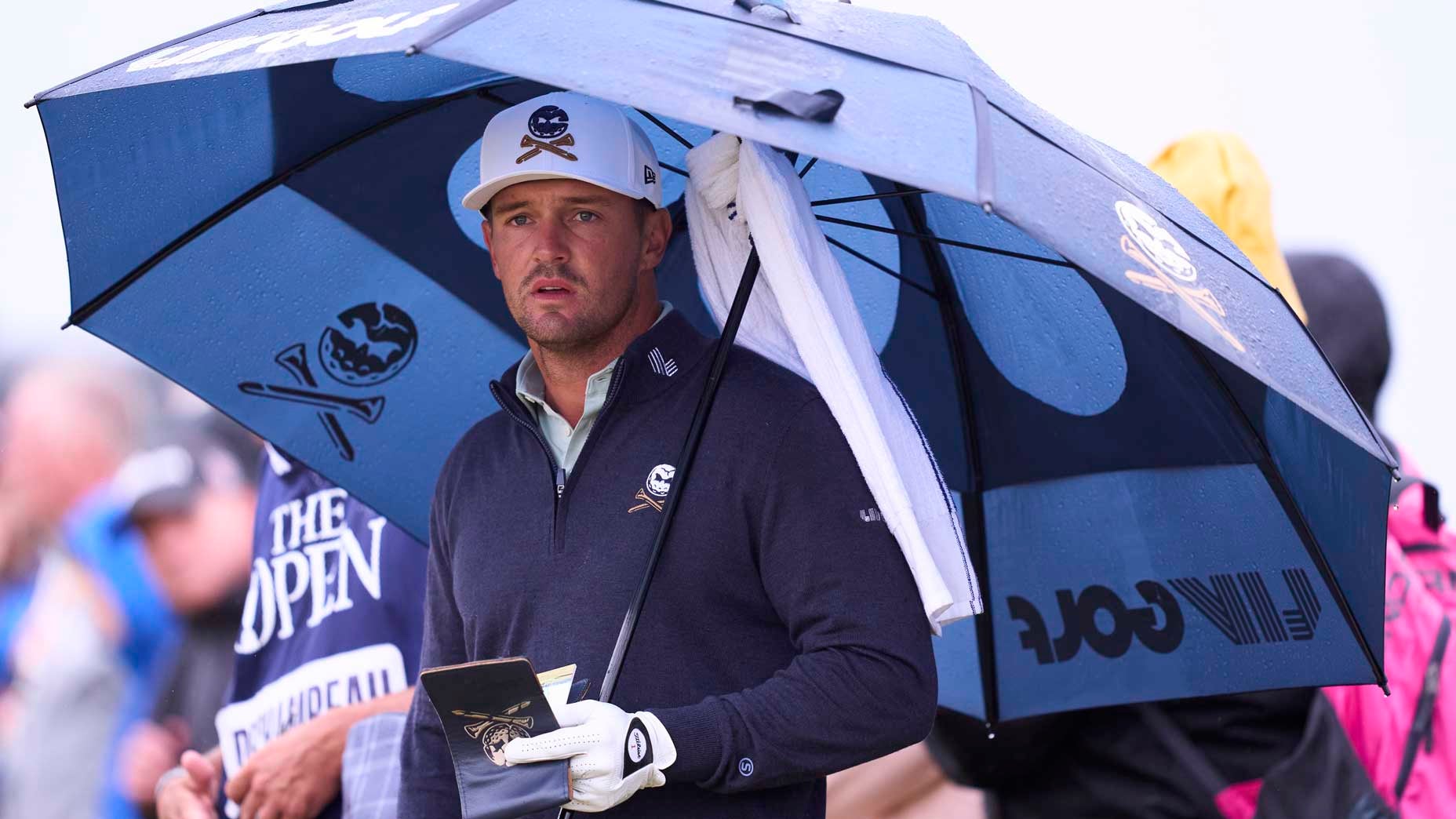The inside story behind Bryson DeChambeau’s secret gear change | Wall-to-Wall

DeChambeau tore his clubs apart (literally) after the first round of the Open Championship to find a fix.
SST
Welcome to Wall-to-Wall Equipment, the weekly gear wrap-up in which GOLF equipment editor Jonathan Wall takes you through the latest trends, rumors and breaking news.
Pure perfection
One shot.
That’s all it took for Bryson DeChambeau to go from lost to angry during the week of the Open Championship. Only DeChambeau wasn’t situated on the range at Royal Liverpool when he had this revelation. He was roughly 70 minutes from the course at clubfitting center Scottsdale Golf, hammering balls in an indoor hitting bay after spending six hours taking his clubs apart to solve a question that’s confounded DeChambeau for nearly five years.
How does one of the fastest players in golf regain some semblance of control on the course?
To understand how DeChambeau ended up here, it’s best to start at the moment when everything changed. In the aftermath of an opening-round 74 at the Open Championship, DeChambeau made a call to Peter Lord, director of Professional Golf Europe and Vega Golf, to see if he could help make sense of his equipment.
“It’s unusual to get a call on the day of the tournament instead of a Monday or Tuesday,” Lord told GOLF.com. “Bryson said he needed help, that he’d tried everything over the last five years — swing-wise, pressure points on his grips and hands — except for the one he’d stopped doing years ago.”
For whatever reason, DeChambeau had gone away from having his clubs undergo a process known as “puring” in recent years, whereby each shaft is analyzed using a shaft analysis machine from SST Pure (Strategic Shaft Technology and Plane of Uniform Repeatability) to find the most stable orientation.
Due to manufacturing tolerances, SST Pure founder Dick Weiss started to notice that not all golf shafts were perfectly round or symmetrical, and even the smallest imperfections — be it wall thickness, straightness or roundness — could cause variations in how one shaft performed versus another within the same model family.
A shaft with the incorrect orientation, when assembled, might release too much or not enough at impact compared to what it’s designed to do. The goal behind the SST Pure machine is to make sure each shaft bends on a neutral axis, which can lead to tighter dispersions and more consistency throughout the set.
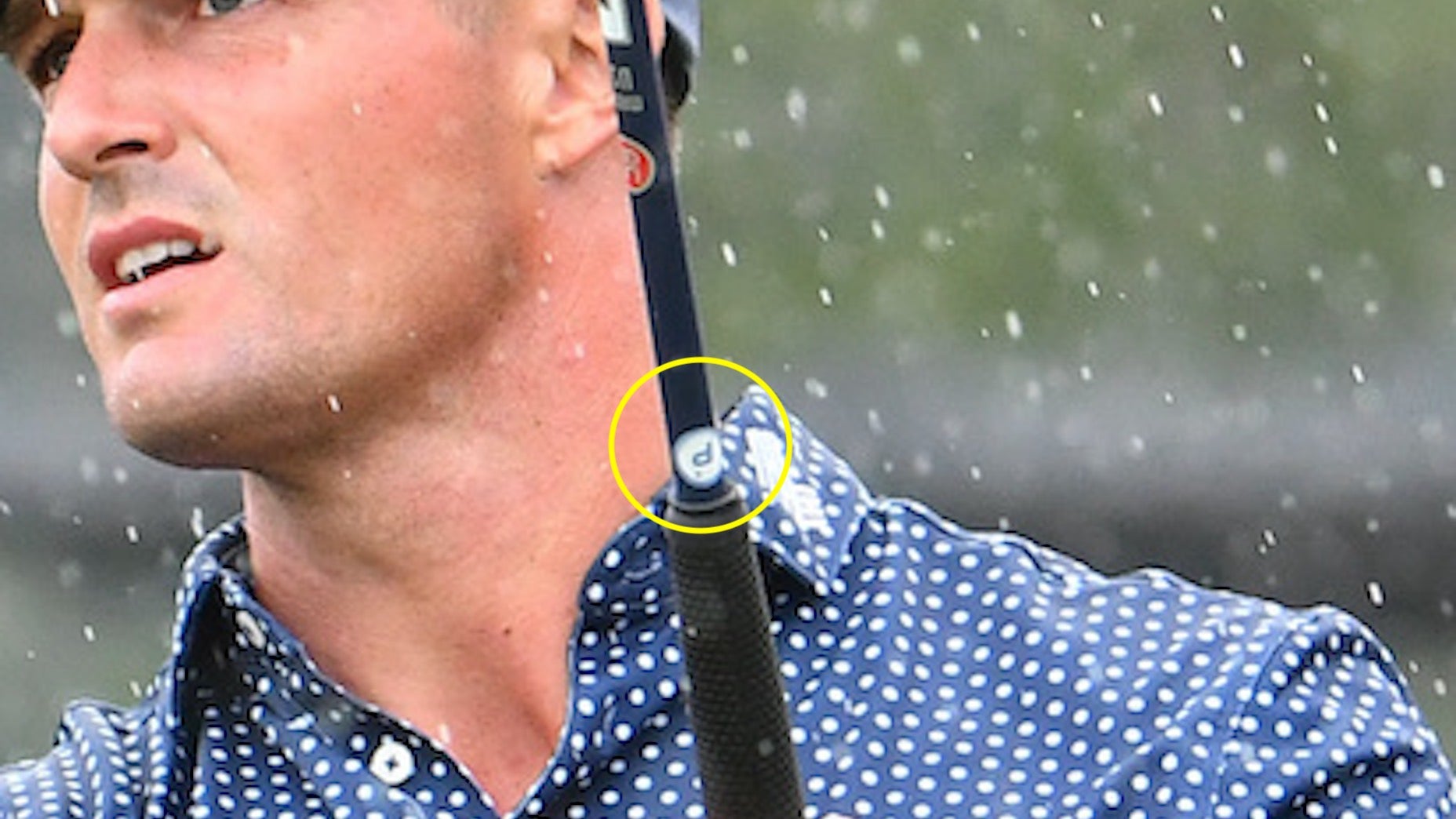
While it’s not widely publicized, countless pros have put their clubs through the SST Pure process over the years, including Tiger Woods, Justin Thomas, Jason Day, Dustin Johnson and DeChambeau. When asked why more golfers don’t “pure” their clubs, Lord used an analogy he picked up from Weiss to hammer home the benefits SST Pure provides.
“It’s like if you go to get new tires on your car,” Lord said. “If they don’t balance them, you’ll be driving home bouncing around and the steering wheel will be vibrating. It’s like balancing for your golf shafts. It helps them perform like they should be performing.
“It doesn’t matter what brand it is, if the shaft isn’t pured, it’s not going to be performing to the best of its capabilities. It doesn’t matter how expensive or cheap it is.”
As for why more recreational golfers don’t have their clubs pured, Lord noted the process is time-consuming and can cost upwards of $55 per club to have each shaft analyzed. Not to mention it takes roughly the same amount of time to analyze one club that it does to have an entire set built.
DeChambeau can attest. After getting in touch with Lord, the two drove to Scottsdale Golf where he learned DeChambeau wanted to take his gamer set taken apart and rebuilt. Although Lord had done plenty of retrofits in the past, this one was slightly different.
“Bryson informed us he didn’t have a backup set with him,” Lord recalled. “Mind you, it’s Thursday. It’s not Monday or Tuesday. If something breaks or isn’t right, there’s no replacement for [Friday] afternoon. I remember him saying, ‘Do it, let’s smash some s*** and get it right. I want these clubs sorted. It’s the only thing it can be. I’ve gone over this in my head time and time again, and I don’t know why I’ve gone away from [the SST Pure] process.'”
“I haven’t slept well for years,” DeChambeau told Lord. “I should be at the top of the game and I haven’t been. I’m on the golf course and I don’t know where the ball is going. I’m scrambling from everywhere. This isn’t an exaggeration, but I don’t know whether the ball is going to nosedive and go left or flare right on me.”
Lord and DeChambeau got to work doing basic club measurements — loft, lie angle, swingweights and lengths — before removing each component. What DeChambeau quickly realized as each shaft was analyzed was the alignment change from one to the next.
“Even the smallest rotation can make a massive difference, but not all of them will be huge rotations of alignment shifts,” Lord said. “Some will be 5 degrees, and that will be the difference between a shaft that’s massively out of plane to one that’s flatlining. “The crux of it is basically all of these parameters that have huge variables get worse or more extreme the harder you’re swinging it.
“The average guy will have misses, but when you’re at Bryson’s speed, those same misses become exaggerated. In a perfect world, with many of Bryson’s clubs all having the same length shaft, the goal would be to have all the same profiles, hot spots, soft spots, spines and what have you. But what we initially found was quite a lot of variation. They weren’t straight.”
After rebuilding the driver, DeChambeau hit a single ball and paused. “I’m so angry at myself,” he said. Lord assumed it had to do with the build and that something was off. But it had nothing to do with the six hours of work they’d just put into rebuilding the set.
SST Pure
“It’s taken me this long to think why have I not done this,” he continued. “Of all the sleepless nights I’ve had, why didn’t I think about doing this? I haven’t been able to hit this shot for 5 years.”
The shot he was referring to was a draw that launched at 13 degrees and bent 20 yards left-to-right with 1,600 RPMs of spin. The end result was 330-340 yards of carry. These were numbers DeChanbeau admitted he wasn’t able to consistently achieve at the time because he feared the ball might nosedive left at a moment’s notice. In the end, DeChambeau saw an uptick in dispersion and consistency with all of the clubs in his bag, leading him to believe he’d made the right decision to have the clubs torn apart and rebuilt.
Lord cautioned DeChambeau that it might take time for him to get back to where he could go all-out with each club in the bag. This was not an overnight fix. But even early on Lord saw things were starting to improve.
“The next day out he was four shots better than the previous day to make the cut,” Lord said. “He didn’t do anything amazing the next two days, but you could see a difference in where he was having his misses. It was bubbling around in the background.”
One week later, DeChambeau shot 58 at a LIV event and heaped praise on a new Krank driver he recently added to the bag. The driver has always been one of the most important clubs in DeChambeau’s bag, but what ultimately makes the former U.S. Open champion one of the most feared golfers on the planet is when he’s able to tighten up his misses, something he’s been able to do with the help of SST Pure.
“The change from then to shooting 58 — I can’t explain the difference,” Lord said. “This is someone who got in my car on Thursday and said he didn’t know where the ball was going. Outside of the driver head, nothing else changed.”
Putter update
Putter changes for Rory McIlroy and Scottie Scheffler produced a mixed bag in Memphis. McIlroy, who went to a Scotty Cameron Phantom 5.5 mallet, ranked 23rd in SG: Putting and finished one shot back of eventual winner Lucas Gloves. (A mid-tournament alteration to the putter turned out to be the bigger story.)
For Scheffler, things didn’t seem to click with TaylorMade’s Spider Tour X SS Proto putter. He ranked 62nd in SG: Putting for the week, losing 2.953 strokes to the field, en route to a T31 finish.
Spotted on Tour
The next Blueprint won’t consist of a single blade. Instead, Ping appears to be focused on expanding the handicap range Blueprint services. Less than a month after the cavity-back Blueprint S appeared on Tour, a full-on blade, called Blueprint T, made its debut at the FedEx St. Jude Championship.
It’s natural to look at the Blueprint T and wonder how it stacks up to the original Blueprint. While we likely won’t have any concrete details for some time — it should be noted Ping waited more than eight months to release the first Blueprint retail heads — the irons share one thing in common: a machined tungsten toe screw that most likely gives Ping’s most unforgiving iron model a slight bump in the MOI department.
The overall look has been scaled down considerably and only features a single “Blueprint T” callout on the back of the head. The rest of the surface remains free of badges and other markings. Assuming the version introduced to Tour pros in Memphis is the retail offering, it should earn high marks from the minimalist crowd.
While the Blueprint S looks to have some S55 traits — forgiveness and workability in a more compact package — the Blueprint T remains a pure blade with minimal offset. In a head-to-head comparison with the Blueprint S, the Blueprint T has noticeably less offset and a slightly thinner topline.
Quick-hitters: Taylor Moore shortened his Ping G430 LST driver by a half-inch (44.5 inches finished length) and added three-quarters of a degree (11.25 degrees in the flat loft sleeve setting) to make it easier to turn the ball over on command. … Kurt Kitayama returned to his old Scotty Cameron TourType Timeless GSS putter. … Rory McIlroy sent his caddie to a Memphis golf shop in the middle of an event for a very good reason. … Aaron Rai switched to an Axis1 Tour-HM putter.
Want to overhaul your bag for 2023? Find a fitting location near you at True Spec Golf.

